Physical Address
304 North Cardinal St.
Dorchester Center, MA 02124
Precipitation of calcareous substances requires an alkaline medium and high local concentrations of ionic calcium. The term metastatic calcification refers to deposition of calcium salts in normal tissues secondary to hypercalcemia and an elevated pH. Although the stomach and kidneys are the most frequent sites of metastatic calcification, the degree of opacification in these organs is usually too faint to be detected on abdominal radiographs. The most common cause of detectable metastatic calcification is chronic renal failure with secondary hyperparathyroidism. In such cases, diffuse opacification of the kidneys is often accompanied by osteomalacia or osteoporosis.
The term dystrophic calcification refers to a far more frequent phenomenon than metastatic calcification that occurs despite normal serum calcium levels. Dystrophic calcification may be caused by trauma, ischemia, infarction, or other pathologic processes that predispose to calcium deposition. In some tumors, rapid breakdown of lipids causes the release of fatty acids that bind to calcium with particular avidity. Mucin-producing adenocarcinomas of the gastrointestinal (GI) tract contain a glycoprotein similar to cartilage that also has an affinity for calcium aggregation.
Some devitalized or degenerative tissues can be associated with new bone formation, but ossification is much less common than dystrophic calcification. Calcified osteoid may be found as an isolated finding or may coexist with areas of calcium deposition that lack bony structure. Ossification can occur in ovarian or retroperitoneal teratomas ( Fig. 3.1 ), abdominal scars (particularly after gastric surgery or suprapubic bladder catheterization), and, rarely, colonic and retroperitoneal neoplasms.
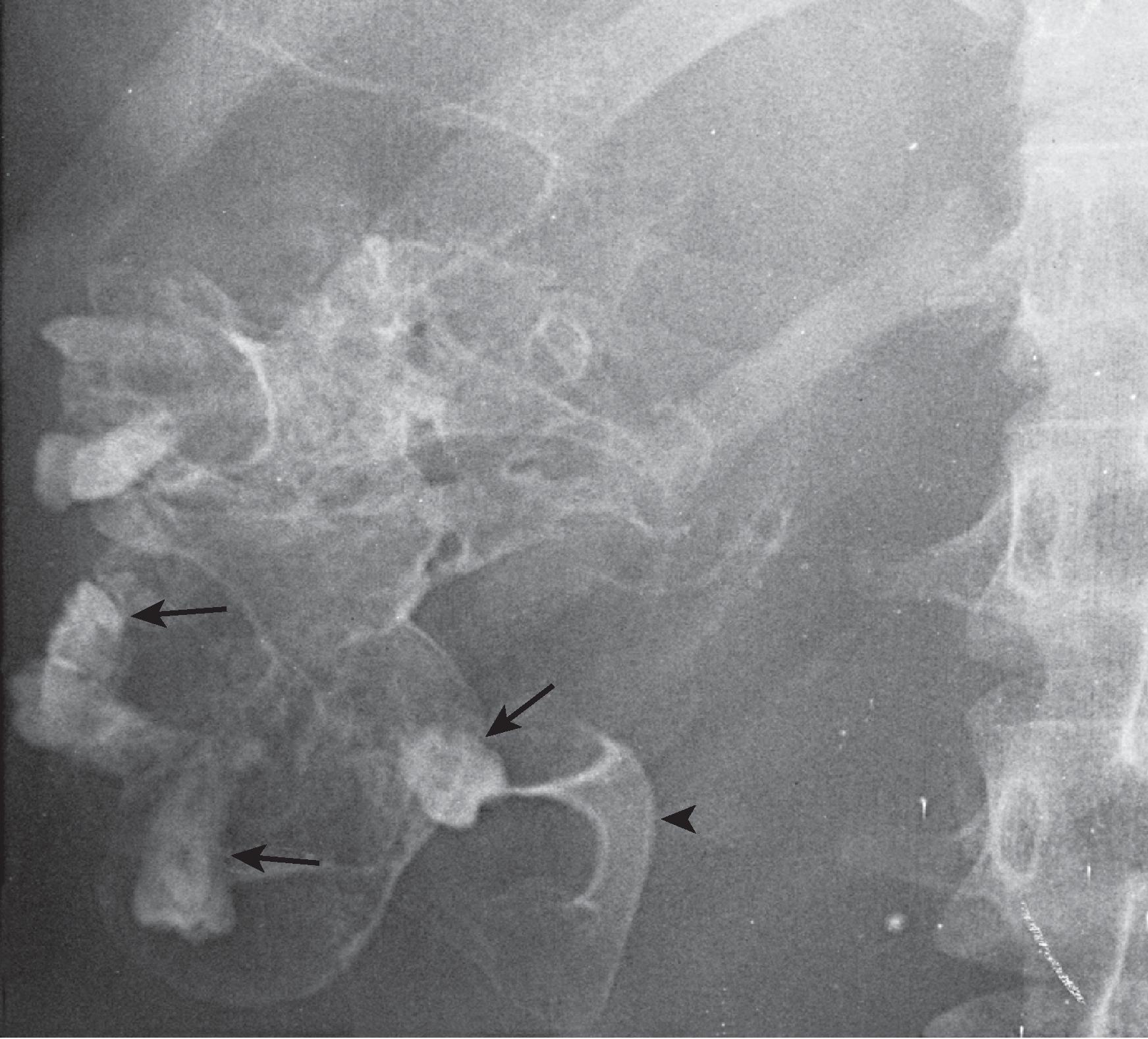
Papillary serous cystadenocarcinomas of the ovary often contain a distinctive form of calcification characterized by psammomatous or cloudlike opacities secondary to intracellular deposition of calcium salts ( Fig. 3.2 ). In contrast, dystrophic calcification associated with other metastatic tumors is caused by extracellular precipitation of calcium salts. In such patients, both psammomatous and dystrophic calcification may be manifested by amorphous areas of increased density that have a distinctive appearance and location highly suggestive of calcified metastases.
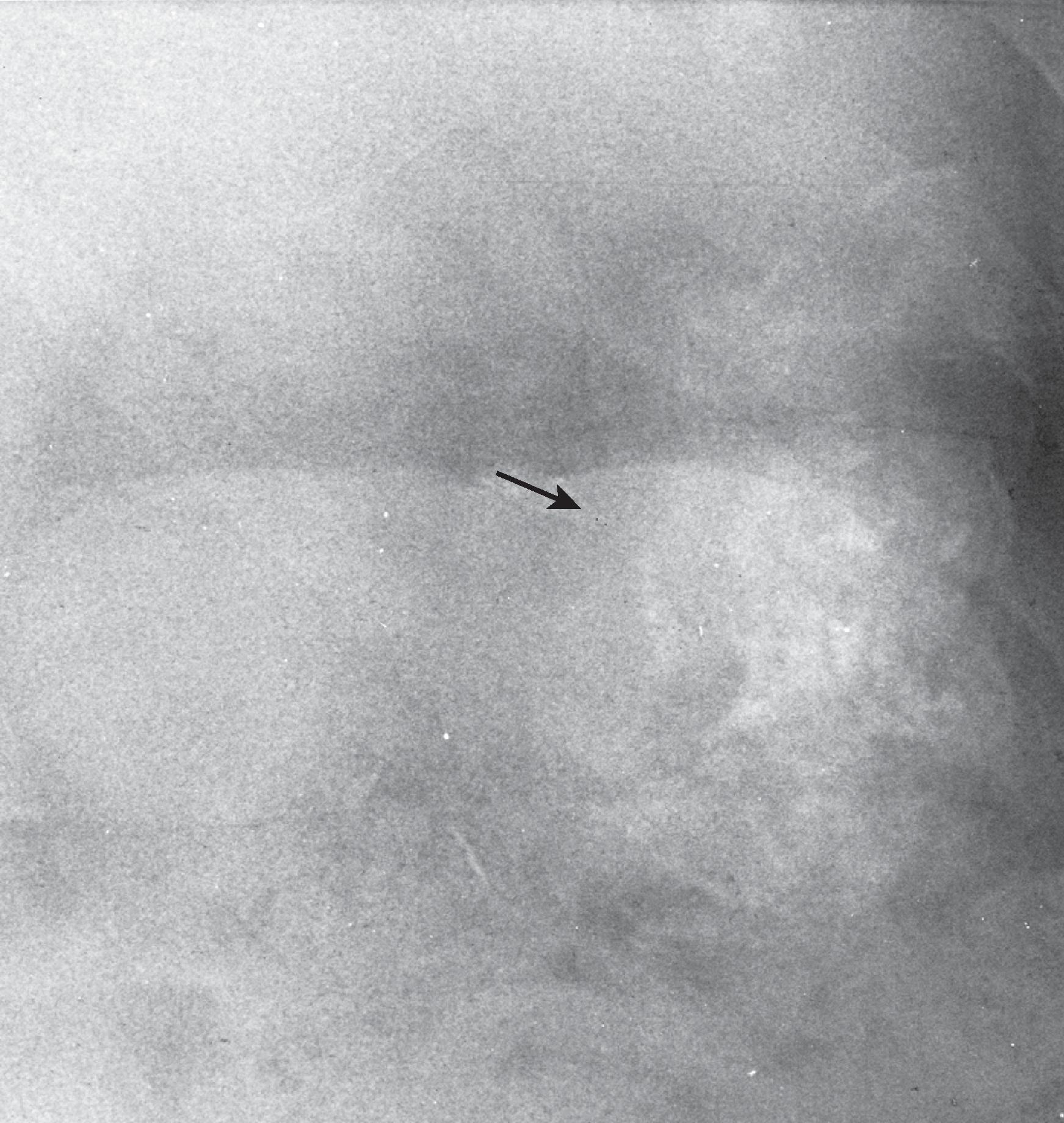
Recognition of different types of abdominal calcifications has been aided by the attribution of vivid descriptive names to particular radiopacities. For example, a “staghorn calculus” is a large, branching opacity in the renal pelvis. Such appellations are highly evocative and easily remembered but do not help generate a differential diagnosis. This chapter therefore presents a logical scheme for differentiating various causes of abdominal calcification based on their morphologic features, including contour, border, sharpness, marginal continuity, and internal architecture. Consideration of these features permits grouping calcifications into four classes: (1) concretions; (2) conduit wall calcification; (3) cystic calcification; and (4) solid mass calcification. The distinguishing features of each class are discussed in the following sections.
Concretions are precipitates removed from solution in a liquid medium inside a vessel or hollow viscus. They often contain a central nidus composed of an insoluble substance such as an inorganic foreign body, ingested vegetable matter, thrombus, or focal collection of pus and cellular debris. In pelvic veins and in the GI and genitourinary tracts, concretions are likely to calcify, appearing as bright or faintly opaque densities, depending on the size of the opacity and the amount of calcium per unit volume. Concretions do not have a common shape. Biliary calculi are usually ovoid or rounded, whereas gallstones are frequently faceted ( Fig. 3.3 ). Ureteral and pancreatic stones often have jagged edges, but in hollow viscera such as the urinary bladder and gallbladder, the concretions usually have smooth margins.
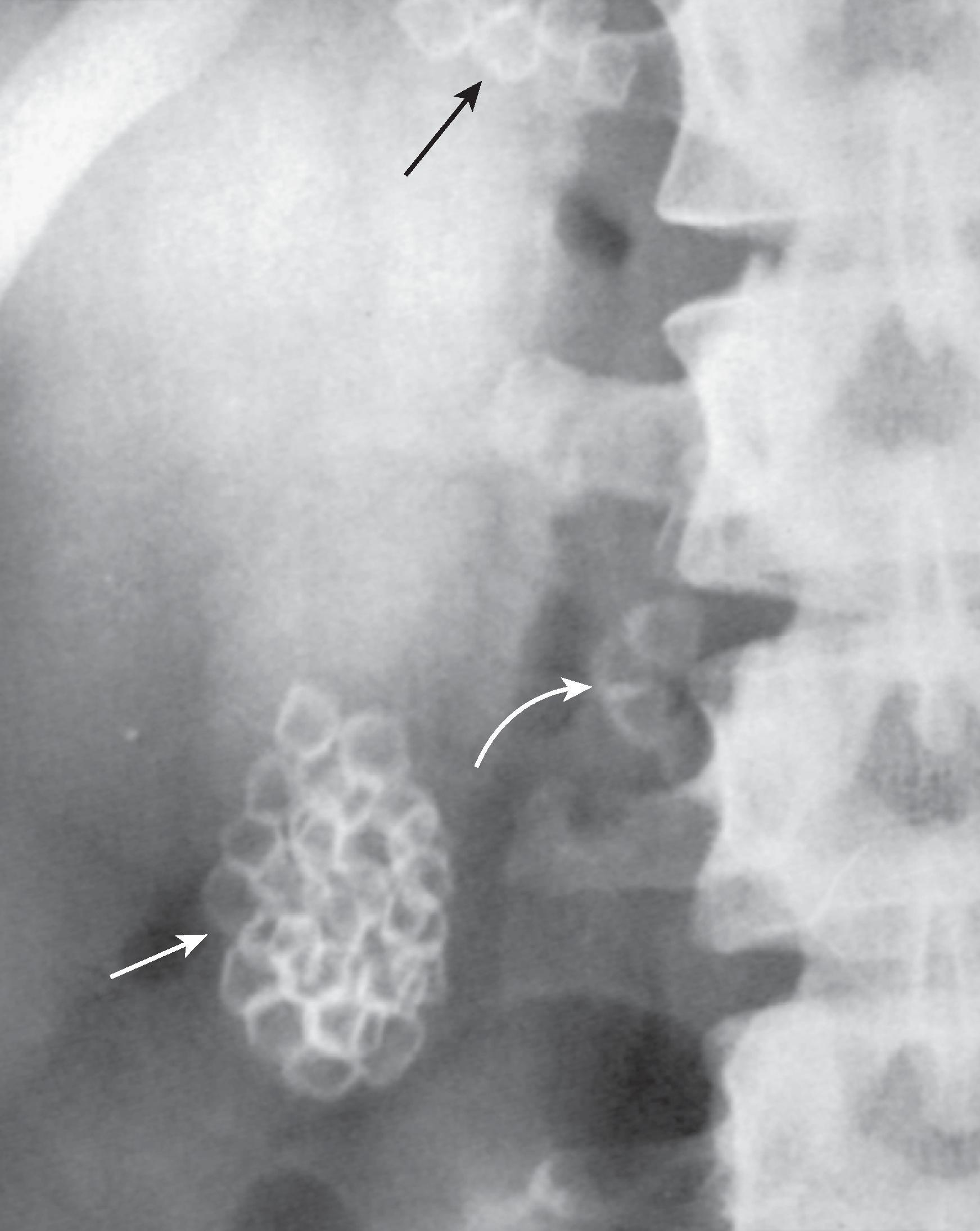
A sharply defined, continuous external margin is a unifying feature of concretions. Stones are almost always characterized by an uninterrupted edge of calcification throughout their entire perimeter. This unique feature permits differentiation of small stones with radiolucent centers from calcified vessels seen on end. Circumferential opacification of the perimeter of large stones also facilitates differentiation from calcified cysts.
Concretions vary greatly in internal architecture. A stone may be homogeneously dense (a pattern often encountered with urinary calculi) or may contain a central or eccentric area of lucency, whereas phleboliths typically contain a central lucency ( Fig. 3.4 ). Concentric laminations are characteristic of gallstones, bladder concretions, and appendicoliths ( Fig. 3.5 ). In contrast, stones seldom have a mottled, speckled, or patchy appearance.
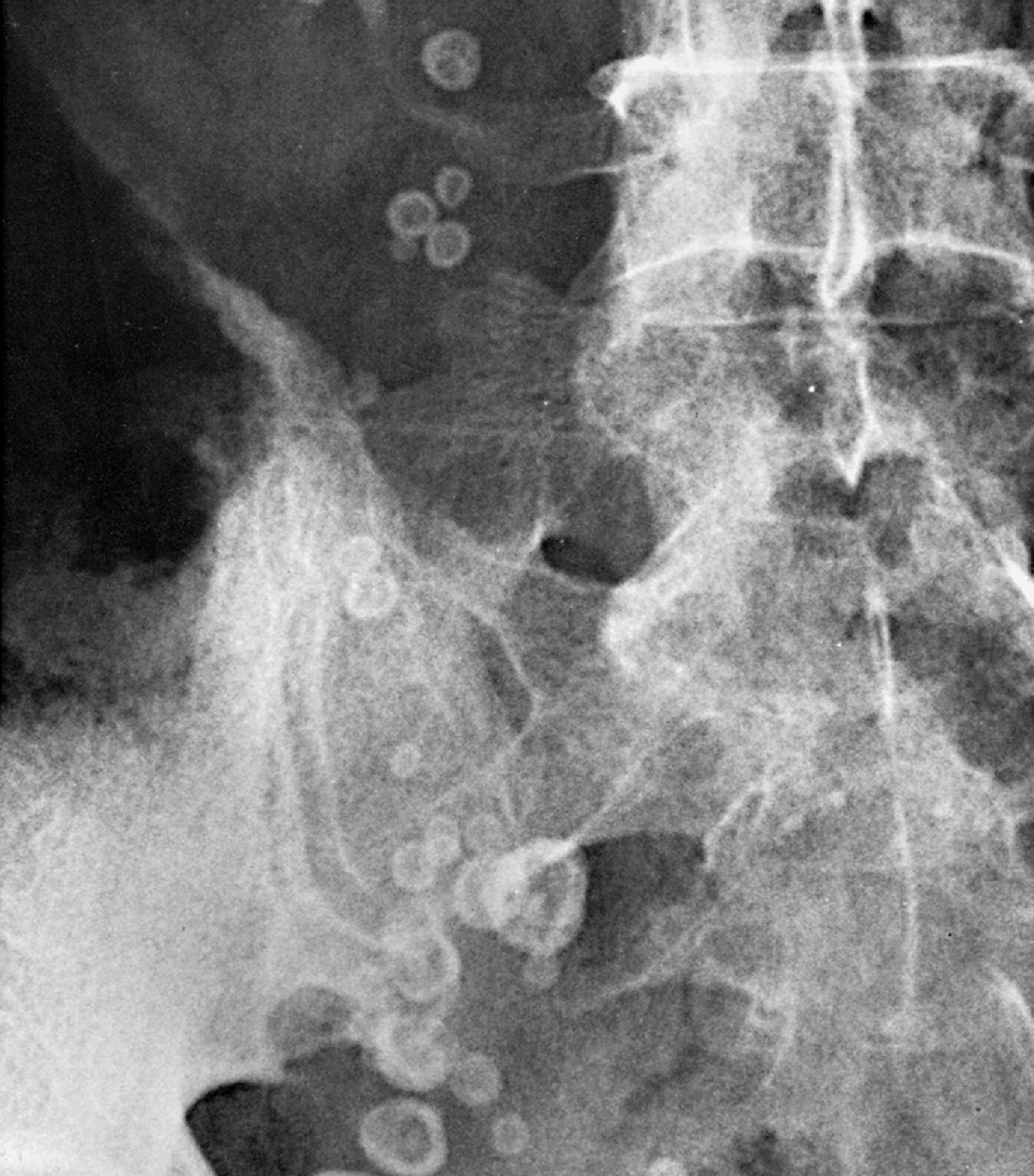
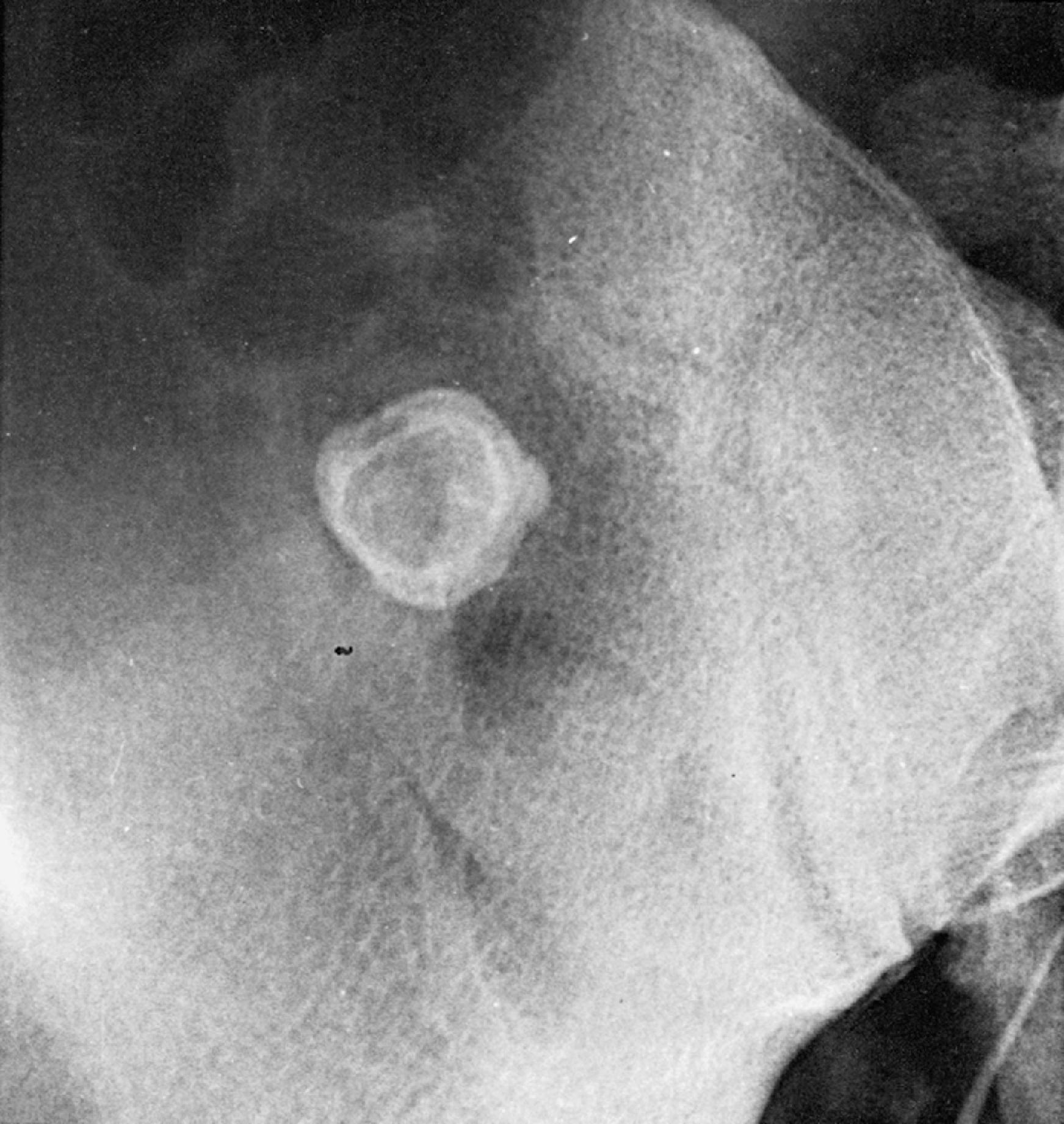
Unlike calcified solid lesions or cysts, which distort or displace adjacent structures, stones tend to be confined within preexisting vessels or fluid-filled viscera. Although unusual, concretions occasionally may develop outside the expected anatomic locations of hollow structures; examples include phleboliths in a hemangioma, ectopic gallstones in the ileum secondary to gallstone ileus, and appendicoliths in the peritoneal cavity secondary to appendicitis with a ruptured appendix.
Become a Clinical Tree membership for Full access and enjoy Unlimited articles
If you are a member. Log in here